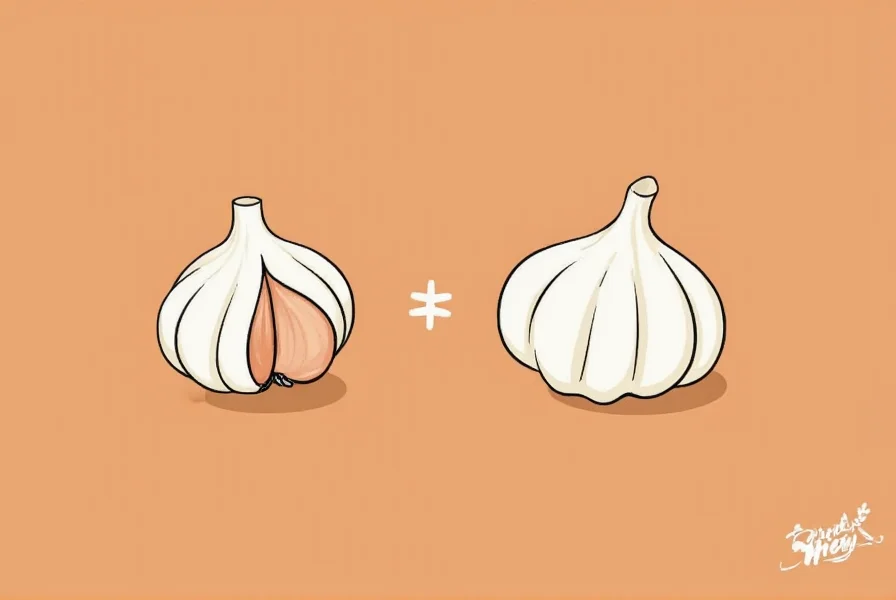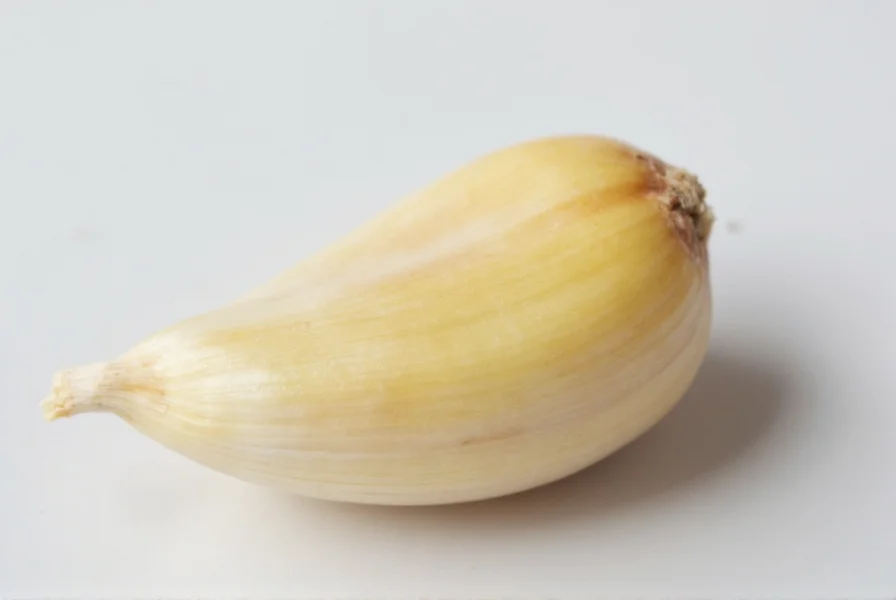Understanding precise garlic measurements is essential for achieving consistent flavor in your cooking. Whether you're following a recipe that specifies cloves or need to convert to alternative garlic forms, knowing the exact equivalents ensures your dishes turn out perfectly every time.
Standard Measurements for One Garlic Clove
While garlic cloves naturally vary in size, culinary professionals and food scientists have established standard measurements that home cooks can rely on for consistent results. These measurements serve as reliable guidelines when preparing recipes that specify garlic quantities.
| Measurement Type | Small Clove (4-5g) | Medium Clove (6-7g) | Large Clove (8-10g) |
|---|---|---|---|
| Whole Clove Dimensions | 1” × ½” | 1¼” × ¾” | 1½” × 1” |
| Minced Garlic | 1 teaspoon | 1½ teaspoons | 2 teaspoons |
| Chopped Garlic | 1½ teaspoons | 2 teaspoons | 1 tablespoon |
| Garlic Puree | ¼ teaspoon | ½ teaspoon | ¾ teaspoon |
Factors That Affect Garlic Clove Measurements
Several variables influence the actual yield you'll get from a single garlic clove, making it important to understand what affects these measurements when following recipes.
Garlic Variety Differences
Not all garlic is created equal. The two main categories—softneck and hardneck—produce cloves with different characteristics:
- Softneck garlic (most common in supermarkets) typically has smaller, more uniform cloves with higher yield per bulb
- Hardneck garlic features larger individual cloves but fewer per bulb, often with more intense flavor
- Solo garlic (single-clove varieties) can yield up to 1 tablespoon of minced garlic from one large clove
Bulb Position Matters
The position of the clove within the garlic bulb significantly impacts its size. Outer cloves are consistently larger than inner cloves, sometimes by as much as 50%. When recipes call for "large" or "small" cloves, they're typically referring to these positional differences rather than the overall bulb size.

Garlic Conversion Guide for Recipe Substitutions
When you don't have fresh garlic available or need to adjust measurements, these conversion ratios will help maintain proper flavor balance in your dishes. These garlic measurement equivalents are essential for home cooks working with different garlic forms.
| Fresh Garlic | Garlic Powder | Garlic Salt | Garlic Flakes |
|---|---|---|---|
| 1 clove (minced) | ¼ teaspoon | ½ teaspoon | ½ teaspoon |
| 1 teaspoon minced | ¼ teaspoon | ½ teaspoon | ½ teaspoon |
| 1 tablespoon minced | ¾ teaspoon | 1½ teaspoons | 1½ teaspoons |
| 3 cloves | 1 teaspoon | 2 teaspoons | 2 teaspoons |
When substituting garlic powder for fresh garlic, remember that dried garlic has approximately 4 times the concentrated flavor. This garlic clove conversion chart helps prevent overpowering your dishes with garlic flavor when using processed forms.
Practical Measurement Tips for Home Cooks
Professional chefs and experienced home cooks use several techniques to ensure accurate garlic measurements without specialized equipment. These practical kitchen measurement methods can help you achieve consistent results.
Measuring Without a Scale
When you don't have a kitchen scale available, use these visual indicators to estimate garlic quantities:
- A standard medium garlic clove is roughly the size of your fingertip (from first knuckle to tip)
- One teaspoon of minced garlic should form a small mound about the size of a quarter
- When substituting for recipes that call for "a head of garlic," remember that most supermarket heads contain 10-12 cloves
Accounting for Garlic Age and Storage
Garlic loses moisture during storage, which affects its weight and volume. Older garlic yields less when minced because it's drier. For the most accurate measurements, use fresh garlic that's firm with tight, papery skin. Properly stored garlic maintains better consistency for measurement purposes.

Why Precise Garlic Measurements Matter in Cooking
Garlic's flavor compounds are potent and can dramatically alter a dish when measurements are inconsistent. Understanding exact garlic equivalents helps prevent these common cooking problems:
- Bitterness from overuse of dried garlic products
- Insufficient flavor development when using too little garlic
- Inconsistent results between cooking attempts
- Imbalanced flavor profiles in sensitive dishes like sauces and dressings
When working with garlic measurement equivalents, remember that fresh garlic provides not only flavor but also important textural elements that dried alternatives cannot replicate. For best results in most savory dishes, fresh garlic remains the preferred choice when available.
Frequently Asked Questions About Garlic Measurements
How many tablespoons is one clove of garlic?
A single medium garlic clove yields approximately ½ to ¾ tablespoon of minced garlic. Larger cloves may provide up to 1 tablespoon, while smaller cloves typically yield about ¼ to ½ tablespoon. When measuring garlic in tablespoons, remember that 3 medium cloves equal approximately 1½ tablespoons of minced garlic.
Can I substitute jarred minced garlic for fresh cloves?
Yes, but with adjustments. Most jarred minced garlic products contain preservatives and citric acid that alter the flavor profile. As a general rule, use ¾ teaspoon of jarred minced garlic for every fresh clove called for in a recipe. Keep in mind that jarred garlic has a milder flavor than freshly minced garlic, so you may need to increase the amount slightly for equivalent flavor intensity.
How much does one clove of garlic weigh?
A single garlic clove typically weighs between 4-10 grams, with most medium cloves weighing 6-7 grams. The weight varies based on garlic variety, growing conditions, and position in the bulb. For precise baking or scientific cooking applications, weighing garlic cloves provides the most accurate measurement compared to volume measurements.
How many garlic cloves equal one teaspoon of garlic powder?
Approximately 4 cloves of fresh garlic equal 1 teaspoon of garlic powder. This conversion accounts for the concentration that occurs during the drying process. When substituting, remember that garlic powder has a more intense but less complex flavor than fresh garlic, so you may want to adjust other seasonings accordingly.
Does roasting garlic change its measurement equivalent?
Yes, roasting garlic reduces its volume by approximately 25% due to moisture loss. One roasted medium clove yields about 1¼ teaspoons of roasted garlic paste. The flavor becomes more concentrated and mellow, so you may need slightly less roasted garlic than fresh to achieve similar flavor impact in recipes.










 浙公网安备
33010002000092号
浙公网安备
33010002000092号 浙B2-20120091-4
浙B2-20120091-4